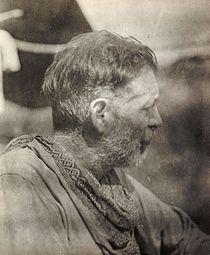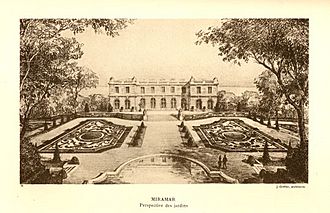Alexander H. Rice Jr. facts for kids
Quick facts for kids
Alexander Hamilton Rice Jr.
|
|
|---|---|

Rice in the field
|
|
| Born | August 2, 1875 Roxbury, Massachusetts, U.S.
|
| Died | July 23, 1956 (aged 80) Newport, Rhode Island, U.S.
|
| Alma mater | Harvard University |
| Known for | Aerial mapping and Amazon River exploration |
| Spouse(s) |
Eleanor Elkins Widener
(m. 1915; |
| Awards | Commandeur de la Légion d'honneur |
| Scientific career | |
| Fields | Geography |
| Institutions | Harvard University |
| Signature | |
Alexander Hamilton Rice Jr. (born August 29, 1875 – died July 23, 1956) was an American doctor, geographer, and explorer. He was famous for his trips to the Amazon Basin in South America.
He taught geography at Harvard University from 1929 to 1952. He also started and led the Harvard Institute of Geographical Exploration.
Early Life and Helping Others
Alexander H. Rice Jr. was born in Roxbury, Massachusetts. His grandfather, also named Alexander Hamilton Rice, was a former mayor of Boston and a governor of Massachusetts.
Alexander Jr. went to Harvard College and then to Harvard Medical School. In 1915, he married Eleanor Elkins Widener. She was a survivor of the famous ship, the RMS Titanic.
During World War I, before the United States joined the fighting, he volunteered as a surgeon in Paris, France. He helped injured soldiers at a French hospital. For his service to France, he received a special award called the Commandeur de la Légion d'honneur in 1919.
Exploring the World
As an explorer, Alexander Rice focused on rivers. He went on seven big trips, starting in 1907. He explored a huge area of the Amazon Basin, which is about 500,000 square miles (1.3 million square kilometers). He mapped many rivers in areas that had never been mapped before, reaching into Colombia and Venezuela.
His wife often joined him on these exciting trips to South America. People followed their adventures closely in newspapers and magazines. On one trip in 1920, his team faced challenges from local groups.
In 1919, he traveled up the Orinoco River in Venezuela. His expedition continued in 1920, going through the Casiquiare canal and down the Rio Negro to the Amazon River.
One of his most important expeditions was in 1924-1925. This was the first time anyone used aerial photography (taking pictures from an airplane) and shortwave radio to map the Amazon. His team also had a peaceful meeting with a group of Yanomami people. Dr. Rice also set up hospitals for Indigenous people in Brazil and studied tropical diseases. He even explored in Alaska and Hudson Bay.
His explorations earned him many awards, including:
- The Gold Medal of the Royal Geographical Society in London (1914).
- Gold Medals from the Geographical Society of Philadelphia and the Société Royale de Géographie d'Anvers.
- A gold medal from the Harvard Travelers Club.
He gave many of his films and photos to the Royal Geographical Society's archives.
In 1929, Rice started the Harvard Institute of Geographical Exploration. He and his wife gave a lot of money to support it. This institute became a leading center for photogrammetry, which is the science of making maps from photographs.
Dr. Rice also held other important roles. He was a curator at the Peabody Museum of Archaeology and Ethnology. He also taught about tropical diseases at Harvard Medical School. He was a trustee at the American Museum of Natural History.
Alexander Hamilton Rice Jr. retired in 1952. He moved to Miramar, his wife's family home in Newport, Rhode Island, where he passed away in 1956.
See Also
- List of explorers
- History of cartography




